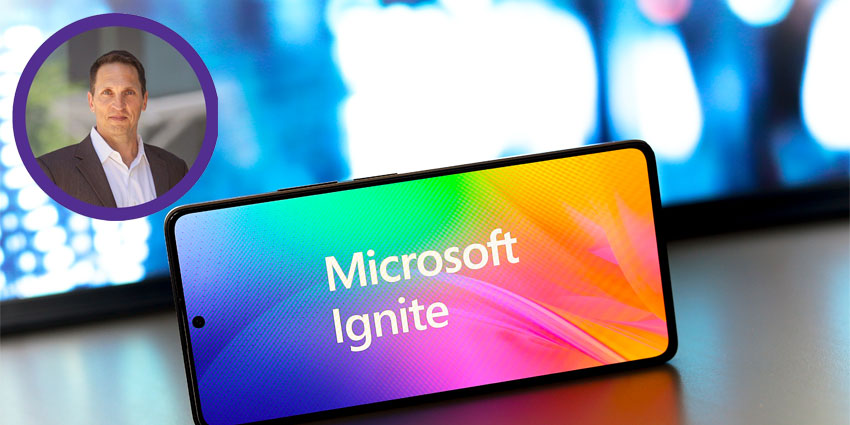The transition to the cloud is happening at an accelerated rate. A need for scalability, cost efficiency, and agility in a complex market has pushed countless companies towards the cloud. At the same time, major events like the impending PSTN/IDSN switch-off in some European markets are making cloud adoption essential.
In this landscape, companies of all sizes are searching for ways to support remote work and bridge the gaps between software and data. In particular, SMBs are looking for opportunities to reduce costs, but also improve employee and customer experiences. “Contact convergence” is emerging as a significant trend, with organizations exploring opportunities to leverage a single platform for all of their unified communication and contact center capabilities.
“As the digital landscape evolves, SMBs must adapt to remain competitive. The convergence of UCaaS and CCaaS is not just a trend, but a strategic imperative,” said Martin Classen, Chief Product Officer of Enreach, the leading European cloud communications provider.
“We understand the importance of integrating communication and collaboration tools to enhance both employee productivity and customer satisfaction. By unifying these solutions, businesses can eliminate silos, streamline operations, and unlock new efficiencies.
Our goal is to provide SMBs with flexible, scalable and affordable platforms that not only meet current needs but are also positioned to satisfy future requirements.”
Embracing true converged contact solutions, however, isn’t without its challenges. According to IDC, while 20% of companies are already using a single platform for UCaaS and CCaaS, a further 40% are still reliant on different platforms.
So, how do SMBs navigate this changing communications space?
Understanding the Benefits of UCaaS-CCaaS Convergence
We’re living in a world of countless contact solutions, from fixed voice and mobile, to video, chat, SMS, social channels, and emails. Unfortunately, many of these solutions are siloed, particularly when it comes to leveraging tools for internal and external interactions.
The disconnect between UCaaS and CCaaS creates a host of problems, particularly for smaller organizations (SMBs). These companies struggle with issues caused by inconsistent access to data, diminished productivity caused by context switching, and high operational costs. Embracing an integrated solution empowers companies to break down silos, improve knowledge management, and enhance customer experiences.
On a broader scale, true converged contact solutions ensure companies can adapt to the changing trends in the communication landscape. This can be extremely difficult for SMBs with smaller budgets and teams. With an all-in-one solution, companies benefit from solutions accessible on any device, paving the way for mobile work.
Additionally, alignment between platforms can centralize the data, applications, and tools that companies need to enhance their AI investments, unlock advanced automation strategies, and access in-depth analytics.
Navigating the UCaaS-CCaaS Convergence
Ultimately, convergence in the contact landscape will only continue to grow in the years ahead, as the shift to the cloud continues and the remote workforce grows. More UC vendors are already expanding into the CCaaS landscape to ensure their cloud-based platforms can cater to all types of business communications.
For SMBs with limited resources, navigating this transition requires a thorough understanding of how to link both solutions, as well as comprehensive support from the right providers.
“Converging UCaaS and CCaaS solutions requires a partner with deep expertise in cloud delivery models and telecommunications, a strong understanding of voice technology and a commitment to innovation,” said Classen.
“Enreach prices itself on delivering comprehensive, user-centric solutions that empower SMBs to transform their communication strategies. Our platforms are designed to seamlessly integrate with existing systems, and deliver a truly unified experience that enhances decision-making, optimizes workflows, and supports business growth.
We are dedicated to helping our clients leverage the full potential of converged contact solutions, ensuring they can adapt swiftly to industry changes and drive sustained success.”
Step 1: Examine Your Landscape and Use Cases
The first step in embracing the convergence of contact solutions, is understanding your existing product landscape and how these should contribute to your strategic goals. Many modern companies don’t just have a single “phone” solution or collaboration app. They’re leveraging a range of technologies, from IP networks to replace PTSN, to mobile networks for remote and field workers, and communication apps to add even more efficiencies.
Assessing your current ecosystems and their limitations gives you a starting point for defining the value of a converged solution. Consider how the limitations of IP networks might be making it tougher to maintain a high quality of service for all forms of traffic. Examine the experience employees have when shifting between different apps and ecosystems.
Ask yourself whether you have the resources available to support all kinds of worker personas, while still maintaining complete visibility into your communication data. Make a list of the key issues you want to overcome, and the goals you need your vendor to help you achieve.
Step 2: Prioritize True Convergence
While there’s significant value in combining UCaaS and CCaaS solutions within a single platform, the true impact of converged contact comes from a truly unified portfolio of tools being seamlessy integrated. Bridging the gaps between CCaaS and UCaaS platforms helps improve productivity, collaboration, and customer experience for every business. However, a complete solution will also boost return on investment, making it critical for SMBs.
Consider the benefits of aligning all the connected solutions in your ecosystem for internal and external contact. This includes productivity tools, CRMs (Customer Relationship Management software), cloud and on-premises support systems, intelligent networks, and marketing tools.
True convergence eliminates the gaps between your data and provides business leaders with a comprehensive environment they can adjust, adapt, and scale according to their evolving needs. Additionally, it ensures that you can rapidly adapt to changes in the communication landscape, implementing AI solutions and advanced automated workflows with minimal effort.
Step 3: Explore Solution Providers
Once you’ve identified the benefits of a truly unified solution for converged contact, you can begin to explore solution providers. Notably, while many vendors now offer UCaaS/CCaaS solutions, few offer a system that allows you to integrate all of your connected tools.
When exploring provider options, look for a vendor with:
- An agnostic ecosystem: Full convergence requires a truly agnostic vendor for devices, software, and networks. The right partner should be able to extend contact capabilities across a range of connectivity features, for both fixed and mobile settings.
- Native mobile integration: As mobility becomes more essential to the way we communicate and work, a native mobile integration is extremely advantageous. Look for a solution that goes beyond standard OTT offerings that disrupt the organic mobile experience.
- User-centricity: The right vendor should support how employees work in the modern world. It should allow employees to manage their own experience, shifting from fixed line to mobile, or leveraging all collaboration features and apps in a single platform.
- Extensive expertise: The right vendor should understand the unique dynamics of operating across your region with FMC and MVNO capabilities. It should also operate its own mobile network, for best-in-class mobility capabilities.
- Scalability: Crucially, the solution you embrace should be able to adapt and evolve alongside your communication strategy. It should give you the freedom to integrate third-party apps, create your own, and design custom workflows that empower your teams.
- Adoption support: A great vendor will enable companies to get the most value out of their connected UCaaS and CCaaS solution, with end-to-end adoption support, training and guidance. Extra support helps to reduce time to value, and preserve employee satisfaction.
Embracing the Future of UCaaS-CCaaS Convergence
Ultimately, contact convergence is still a relatively new concept in the business landscape, but it’s something that’s gaining momentum as the workplace continues to evolve. SMBs now need a solution that unifies their teams, wherever they are, and regardless of which apps and devices they use. They also need a way to align their data and apps to minimize operational costs, improve productivity, enhance customer experience, and pave the way for innovation.
With the right vendor, SMBs can effectively navigate the converging landscape without unnecessary complexity. Enreach provides businesses with a true “converged contact” experience that blends smart network access, contact center, productivity tools, CRMs, marketing automation, AI, and more on your terms.







